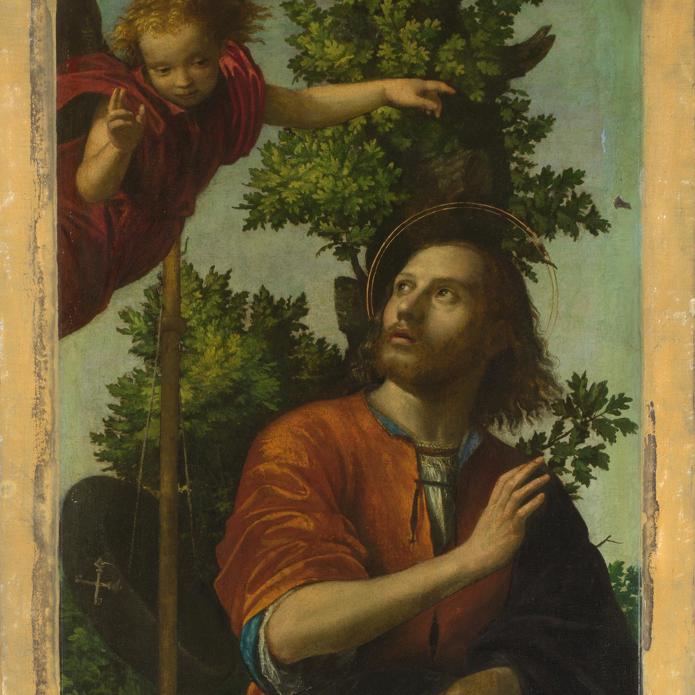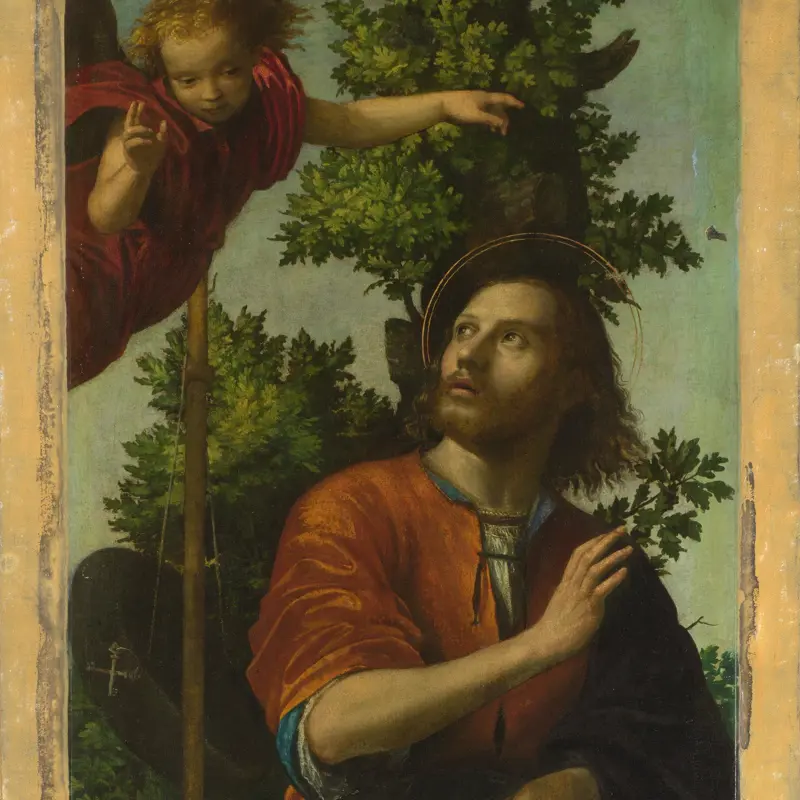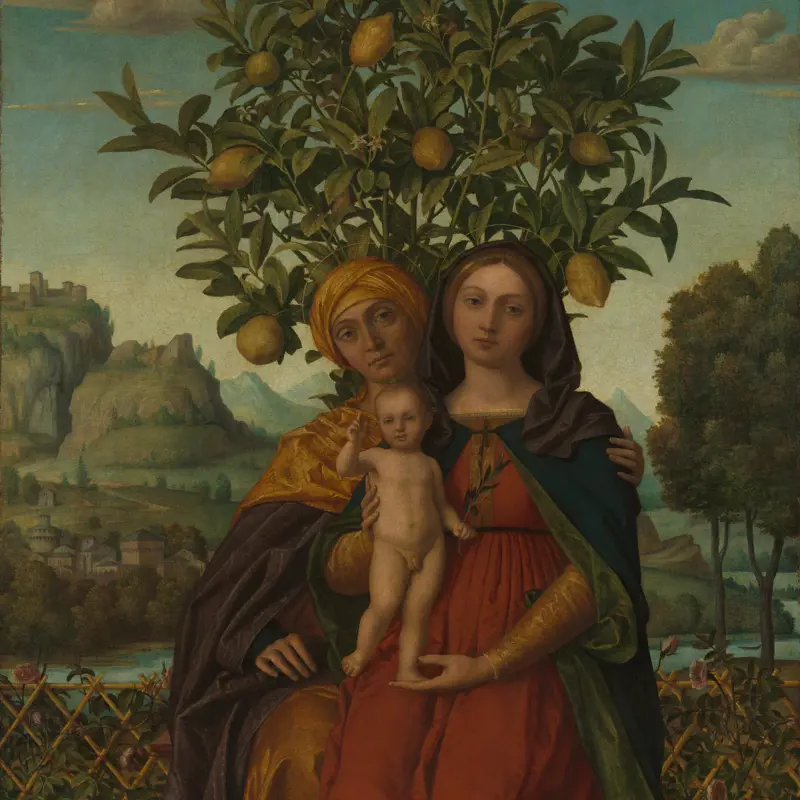Gerolamo dai Libri, 'The Virgin and Child with Saint Anne', 1510-18
About the work
Overview
This is the central panel from a three-panel altarpiece for S. Maria della Scala, Verona. The flanking panel of Saint Roch by Paolo Morando is also in the National Gallery’s collection, but the other flanking panel of Saint Sebastian by Francesco di Marco India Torbido is missing. It is quite unusual for each of the three panels of a triptych to be painted by a different artist. The commission for this work was connected with an outbreak of plague in Verona from 1510 to 1512. Roch and Sebastian are both saints invoked against plague.
The Virgin Mary, Christ Child and Saint Anne are in an enclosed rose garden, symbolic of the Virgin’s purity. They are sitting on each other’s laps beneath a lemon tree, emphasising that this is the generational family tree of Christ. The dead dragon at the feet of the Virgin and the olive branch held by Christ symbolise his victory over the devil but may also refer to the ending of the 1516 siege of Verona.
Key facts
Details
- Full title
- The Virgin and Child with Saint Anne
- Artist
- Gerolamo dai Libri
- Artist dates
- About 1474 - 1555?
- Part of the series
- Panels from an Altarpiece, S.Maria della Scala, Verona
- Date made
- 1510-18
- Medium and support
- Oil on canvas
- Dimensions
- 158.1 × 94 cm
- Inscription summary
- Signed
- Acquisition credit
- Bought, 1864
- Inventory number
- NG748
- Location
- Not on display
- Collection
- Main Collection
Provenance
Additional information
Text extracted from the ‘Provenance’ section of the catalogue entry in Martin Davies, ‘National Gallery Catalogues: The Earlier Italian Schools’, London 1986; for further information, see the full catalogue entry.
Exhibition history
-
2012In Pursuit of Art: Charles Eastlake’s Journey from Plymouth to the National GalleryPlymouth City Museum and Art Gallery22 September 2012 - 15 December 2012
Bibliography
-
1951Davies, Martin, National Gallery Catalogues: The Earlier Italian Schools, London 1951
-
1986Davies, Martin, National Gallery Catalogues: The Earlier Italian Schools, revised edn, London 1986
-
2001
C. Baker and T. Henry, The National Gallery: Complete Illustrated Catalogue, London 2001
About this record
If you know more about this work or have spotted an error, please contact us. Please note that exhibition histories are listed from 2009 onwards. Bibliographies may not be complete; more comprehensive information is available in the National Gallery Library.
Images
About the series: Panels from an Altarpiece, S.Maria della Scala, Verona

Overview
These are two panels from a three-panel altarpiece for S. Maria della Scala, Verona. The central panel of the Virgin and Child with Saint Anne by Gerolamo dai Libri and the flanking panel of Saint Roch by Paolo Morando are both in the National Gallery’s collection, but the other flanking panel of Saint Sebastian by Francesco di Marco India Torbido is missing. It is quite unusual for each of the three panels of a triptych to be painted by a different artist.
The commission for this work was connected with an outbreak of plague in Verona from 1510 to 1512. Roch and Sebastian are both saints invoked against plague. In the central panel, the dead dragon at the feet of the Virgin and the olive branch held by the Christ Child symbolise his triumph over the devil but may also refer to the ending of the 1516 siege of Verona.


